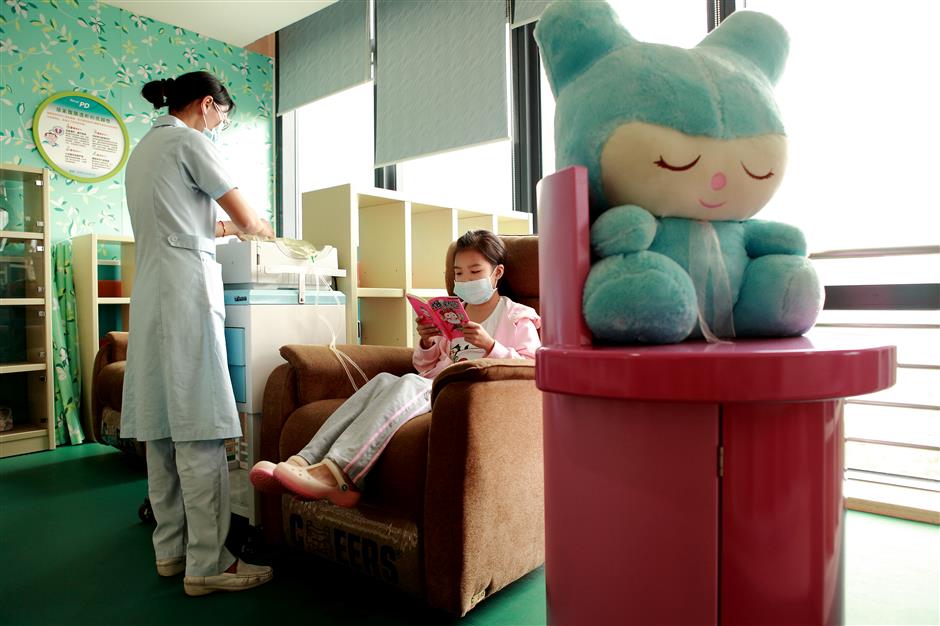Advanced dialysis therapy allows children to receive treatment at home

A girl with uremia receives dialysis at the Children's Hospital of Fudan University.
More children with uremia will be able to receive dialysis at home instead of having to visit hospital every day.
This is thanks to a training course launched in the city on Monday for medical staff to promote the use of automatic peritoneal dialysis, or APD.
Medical staff from 20 children’s kidney disease centers in 18 provinces and municipalities participated in the training at the Children’s Hospital of Fudan University.
A total of 40 donated APD machines will also be distributed among the centers to allow children bring the machines back home for treatment. APD allows children to receive dialysis while sleeping at night and going to school at daytime.
With traditional dialysis, patients must go to a hospital for the treatment.
However, pediatric dialysis started late in China and the quality and treatment results lag in some areas. The training is aimed at improving the capabilities of medical staff across the nation.
“About 70 percent of children with uremia come from poor families, which makes them unable to afford an APD machine at home. So many such children can’t go to school,” said Dr Xu Hong, chief of the project.
“In addition to promoting training for medical staff, we also welcome social donations to help more children have APD at home.”

A boy with uremia receives dialysis at Children's Hospital of Fudan University.
The hospital started to offer APD for children with uremia in 2001, the first hospital in the country to do so.
So far, it has treated about 220 children and 70 are still undergoing APD treatment, with the youngest only 6 months old. All children treated survived for at least a year, and the five-year survival rate is 90 percent. They are receiving dialysis while waiting for a kidney transplant.
A mother with a girl, who was detected with congenital kidney disease at a month old, spoke of her gratitude.
Her daughter has been receiving APD therapy while she waits for kidney transplants.
“I am very grateful for the therapy, which saved my daughter’s life and allowed her to survive for the surgeries,” she said on a video that was shot by the hospital for an APD education program.
There are about 30 local children diagnosed with uremia every year.
Globally, between three and six babies in every thousand are born with a kidney or urinary tract deformity.
Doctors said that early and wide screening can help to identity children with kidney diseases promptly and timely intervention can then help to prevent the diseases from developing into uremia.















